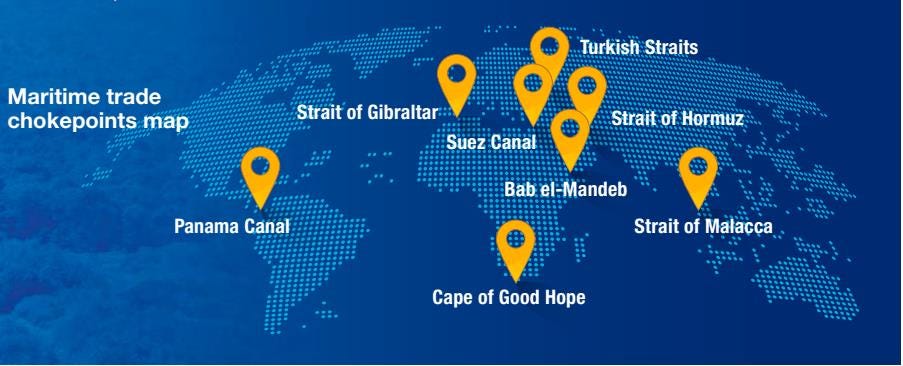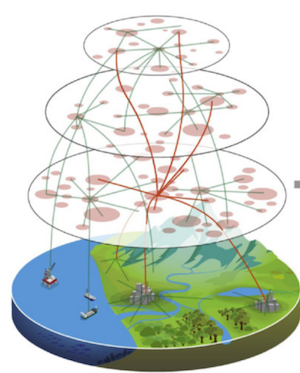Navigating Maritime Insecurity with Agentic AI
A Strategic Shift in Geopolitical Risk Management
Introduction: A New Era of Security Challenges
Maritime security has always been a complex issue, but in today’s interconnected world, the challenges are compounded by geopolitical rivalries, financial instability, and the increasing role of asymmetric threats. Traditional security models are proving inadequate against emerging compound threats—risks that are interconnected, reinforcing, and difficult to predict.
The key takeaway? Security is no longer just about force projection; it’s about anticipatory intelligence, economic foresight, and adaptive decision-making.
Enter Agentic AI—a force multiplier in national security that blends autonomous decision-making with human expertise. Recent research advancements, such as StormWiSE, a collaborative development by Storm King Analytics and Wilson Strategic Enterprises (WiSE), exemplify this approach. This essay is also cross-posted on WiSE's "Compound Security Unlocked" Substack. StormWiSE’s efforts are working to integrate an idea we’ve coined “Artificial Intuition” to complement AI-driven insights with human expertise, creating a true Human-Machine partnership and is a key aspect of a product currently under development by our team.
This post builds on previous discussions of Agentic AI and extends its applications into maritime security using insights from the WiSE’s compound security competition (CsC) framework. We’ll explore how AI-driven models can enhance maritime security, mitigate financial and geopolitical risks, and support a more dynamic global security strategy. In future posts, we will document some of these steps in more detail, providing a deeper dive into the practical applications and benefits of our developments in maritime security.
The Role of Agentic AI in Maritime Security
Maritime chokepoints are essential for global trade, but their security is threatened by a convergence of risks—piracy, state and non-state actors, environmental disruptions, and financial instability. The integration of Agentic AI into security planning provides key advantages:
1. Continuous Data Integration & Threat Detection
Agentic AI synthesizes vast amounts of real-time data, including:
AIS vessel traffic data
Satellite imagery and environmental conditions
Intelligence reports and open-source threat indicators
Financial risk assessments impacting regional stability
The Mutually Assured Diversification (MAD) model, adapted from financial risk management, is embedded into this process to assess economic vulnerabilities. Over-reliance on single trade routes or energy sources is flagged, allowing decision-makers to preemptively diversify resources and prevent cascading failures in global trade.
Example: The system detects an unusual convergence of unidentified vessels near a critical energy transport route in the Bab el-Mandeb Strait. AI analysis matches this behavior with known pirate tactics and alerts security forces before an attack occurs.
2. Proactive Risk Forecasting & Strategic Planning
AI models predict emerging threats by integrating geopolitical intelligence, financial risk models, and historical patterns.
The CsC framework ensures that threat vectors are not viewed in isolation but as converging risks requiring a layered analytical approach. By incorporating MAD principles into forecasting, AI identifies economic stressors—such as currency destabilization, trade restrictions, or regional supply chain disruptions—that could amplify maritime risks.
Example: An AI model identifies a likely increase in militia-backed piracy due to escalating tensions in Yemen. It issues a 30-day high-risk forecast, recommending adjustments to patrol schedules and alternative shipping routes to mitigate exposure.
3. Automated Response Coordination
Once a threat is detected, Agentic AI can execute predefined response protocols:
Adapting naval patrol routes
Issuing alerts to commercial shipping operators
Deploying drone or satellite surveillance
Example: Upon detecting a potential coordinated attack, the AI system recommends rerouting high-value shipments while notifying coalition naval forces for deterrence.
These response mechanisms align with the 3D+C (Defense, Diplomacy, Development, and Commercial) strategy, ensuring that interventions are not purely military but include diplomatic coordination and economic resilience measures. AI-driven responses include strategic engagement with regional allies, supply chain adaptations, and diplomatic signaling to de-escalate potential conflicts.
4. Stakeholder Communication & Strategic Decision-Making
The AI system ensures real-time situational awareness for multiple stakeholders, including military commanders, commercial shipping firms, and diplomatic decision-makers.
Example: AI generates a report highlighting how ongoing regional conflicts could disrupt shipping routes. Insights guide security responses between naval coalitions and commercial operators.
3D+C principles ensure that the commercial and diplomatic sectors are engaged early in the decision-making process, reducing reliance on purely reactive security measures. AI suggests policy-based solutions such as economic incentives to stabilize regions prone to piracy or investment shifts that mitigate exposure to volatile geopolitical areas.
5. Continuous Learning & Strategic Adaptation
Each intervention feeds into a machine-learning feedback loop, refining AI models based on operational outcomes and expert insights.
Example: After a successful interdiction of a piracy attempt, AI refines its detection algorithms to improve early warning accuracy.
The Power of Human-Machine Partnership: Artificial Intuition
While Agentic AI offers predictive insights, Artificial Intuition ensures that human expertise remains central to decision-making. This partnership is critical at key checkpoints:
1. Strategic Confirmation: Human analysts validate AI forecasts, incorporating cultural, political, and economic context.
2. Policy & Rules of Engagement: Decision-makers ensure AI-generated responses align with international law and diplomatic considerations.
3. Post-Incident Analysis & Refinement: Security experts assess AI effectiveness, integrating operational insights to refine future strategies.
By merging these elements with the CsC framework, security operations move beyond immediate threat responses, integrating financial risk modeling and commercial stabilization efforts as core elements of strategic adaptation.
The Future of AI-Driven Maritime Security
By fusing Agentic AI with Artificial Intuition and Compound Security Competition principles, we create a security paradigm that is both predictive and adaptive. Maritime threats are not isolated incidents but parts of an interconnected global security landscape. AI-driven security models will continue evolving, offering more refined threat detection, risk forecasting, and integrated response mechanisms.
The key takeaway? Security is no longer just about force projection; it’s about anticipatory intelligence, economic foresight, and adaptive decision-making.
Conclusion: The Path Forward
The modern security environment demands a fusion of technology, strategy, and human expertise. Agentic AI and Artificial Intuition, exemplified by initiatives like StormWiSE, offer an opportunity to reshape maritime security, mitigating threats before they materialize. By adopting a compound security approach, stakeholders can navigate 21st-century challenges with greater foresight, agility, and resilience.
What are your thoughts on the role of AI in global security? Join the conversation in the comments below! In future posts, we will delve deeper into how these technologies are being implemented and document the steps involved in solving the compound security dilemma. Stay tuned to see how Artificial Intuition and Agentic AI are making a tangible impact and driving innovation in the field.







